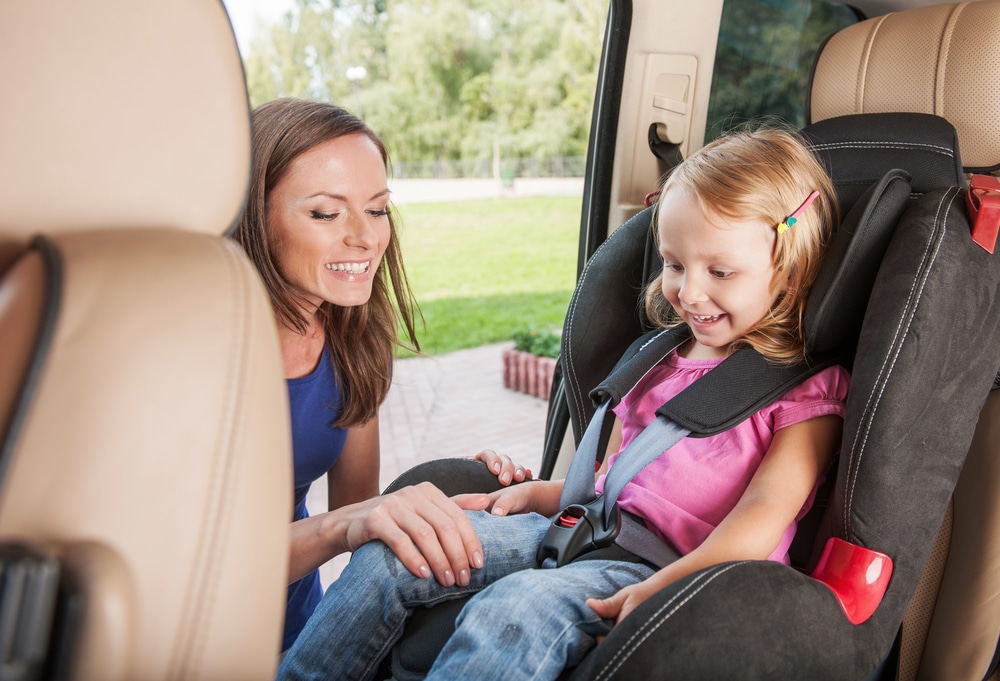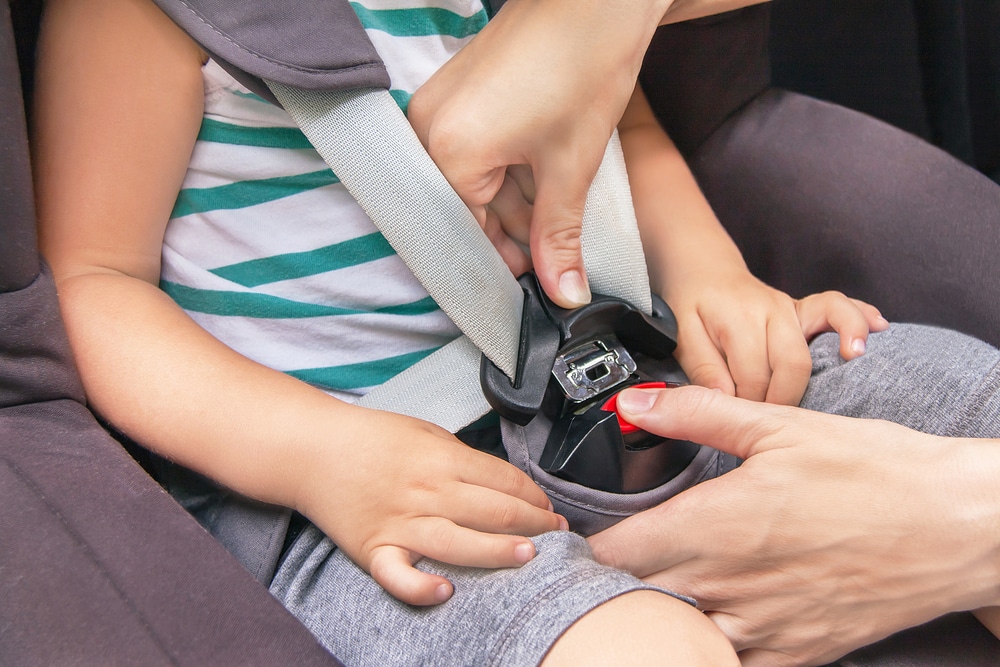Car accidents, unfortunately, remain a leading cause of injury and death for young children in North Dakota. Further, many of them would have been prevented had the driver secured them in a proper car seat.
North Dakota car seat laws have strict requirements to prevent tragedy based on a child’s height and weight. Drivers found in violation of the regulations are subject to financial penalties and even possible jail time if the child gets hurt in an accident.
If you have any questions about North Dakota car seat laws, look no further. Keep reading to learn about the specific penalties and how to shop for the correct car seat for your child.
North Dakota Car Seat Laws: Basic Overview

North Dakota Century Code 39-21-41.2 is the primary legal statute that deals with North Dakota car seat laws. It lays out all of the quality mandates and height requirements for car seats in North Dakota. Below, we’ll go over these requirements as well as the penalties for violating ND car seat laws.
North Dakota Car Seat Requirements
Unlike many other states which differentiate between age groups, North Dakota car seat laws apply to all children ages seven and younger. The law does not specify which type of car seat is required, only that these children need to be secured in a safety seat.
To summarize, North Dakota car seat law stipulates that all children under the age of eight need to be secured in a federally approved child safety seat. Drivers must also follow the directions on the safety seat’s label to ensure their child meets the company’s requirements.
However, all children over the height of 57-inches (4’9”) do not need to be secured in a child safety seat. For example, you do not need a safety seat for a seven-year-old who measures 60-inches. Also, children weighing above 80 pounds similarly do not need to be secured in a safety seat.
Booster Seat Requirements ND
Some states have requirements for booster seats, especially for children over the age of three. North Dakota, however, has no requirements for booster seats. Infants and small children can legally be secured using a booster seat under state law. However, it is not recommended. To maximize their safety, infants and small children should be secured by a proper child safety seat.
Worthwhile to note is that there are no state-mandated requirements for rear-facing child safety seats, unlike many other states in the country. North Dakota does recommend using a rear-facing seat for children under the age of three but doesn’t require it.
Penalties for Child Safety Seat Violations
North Dakota has fairly lenient penalties for violating child safety seat laws. As per the North Dakota state website, drivers violating child safety seat laws are subject to a fine of $25. Also, they will be given one demerit point on their driving record.
While this might not seem to be very strict, demerit points can add up fast. Enough points can result in a license suspension or revocation, meaning you legally be allowed to drive.
Also, these penalties will stack depending on the number of children in your car. For example, if you have two children under the age of eight riding in your vehicle unrestrained, you can receive a fine of $50 and two demerit points; for three children, $75, etc.
North Dakota Child Safety Seat Exceptions
There are two notable exceptions for child safety seat requirements under North Dakota Law.
The first exception is in the event of an emergency, a child under the age of eight and 4’9″ or 80 pounds does not need to be secured in a child safety seat. EEssentially, this means that if you or the people in your vehicle are experiencing a medical, physical, or environmental emergency, you do not have to worry about child safety restraints.
The second exception to the North Dakota child safety seat law is that children do not need to be secured in a safety seat if the vehicle was not manufactured with seatbelts. While you would be right to think that all vehicles made nowadays have seat belts, there are still some vintage vehicles on the road. Most cars made before the 1960s did not require seat belts, so children riding in a vintage vehicle today would not have to worry about a child safety restraint.
Also, many agricultural vehicles like tractors or some construction vehicles don’t have seat belts either. In a state like North Dakota, where nearly 90% of all land is used for agriculture, it would be unreasonable to require children to use child safety restraints in every situation.
In summary, if you drive a vintage or agricultural vehicle that isn’t equipped with seat belts, you do not need to secure your child in a child safety seat. You can find the classifications for farm vehicles under Section 5 of Century Code 39-04-19.
North Dakota Seat Belt Law

North Dakota also has comprehensive seat belt laws as listed by Century Code 39-21-41.4. Essentially, every person under the age of 18 but above the age of seven in a motor vehicle needs to be wearing a safety belt. In other words, all minors in the vehicle need to be wearing some sort of safety restraint, whether that be a child safety seat or a safety belt.
For adults, North Dakota law stipulates that any front-seat passengers must wear a safety belt while the car is in motion. Backseat passengers over the age of 18 are not required by law to wear a safety belt. We do recommend wearing one, though, as they could be your only line of defense in the event of a car accident.
North Dakota Safety Seat Recommendations
Outside of the law, North Dakota also provides recommendations for parents and guardians to keep in mind. There are no penalties for not following these recommendations. Instead, they are meant to guide your car seat purchasing decision and maximize your child’s safety.
The following are the recommendations for safety seats as per the Department of Transportation:
- Children should be secured in a rear-facing safety seat until at least two years of age.
- Infant seats should only be used until about 22-35 pounds.
- Convertible seats should only be used rear-facing up to 30-40 pounds.
- Booster seats can be used once children have outgrown the harness of their forward-facing safety seat. They should be at least 40 pounds and at least four years of age.
- Seat belts can be used once the child has outgrown all other safety restraints. They should be shoulder-lap belts when available or lap belts if that is all that’s available.
Final Thoughts
While safety belts can help prevent death or injury in a car accident, they’re not sufficient to protect young children and infants. Luckily, car safety seats are available to help safeguard your children in the event of a car accident.
Although there are fines and other penalties for violating these laws, they’re not meant to punish you. They’re meant to protect your children from harm. Follow North Dakota car safety seat laws and get the peace of mind only a safety seat can provide.






